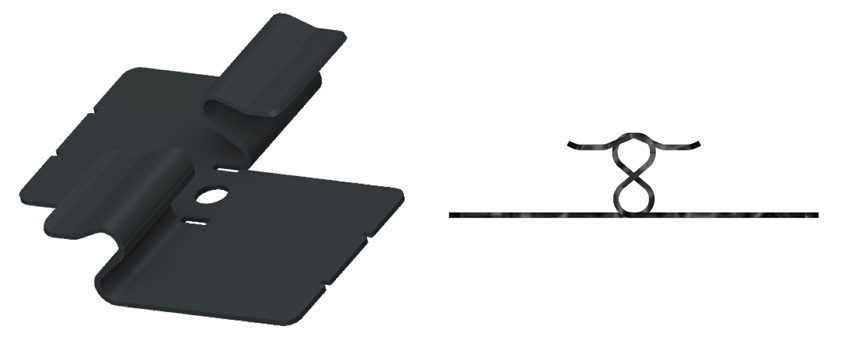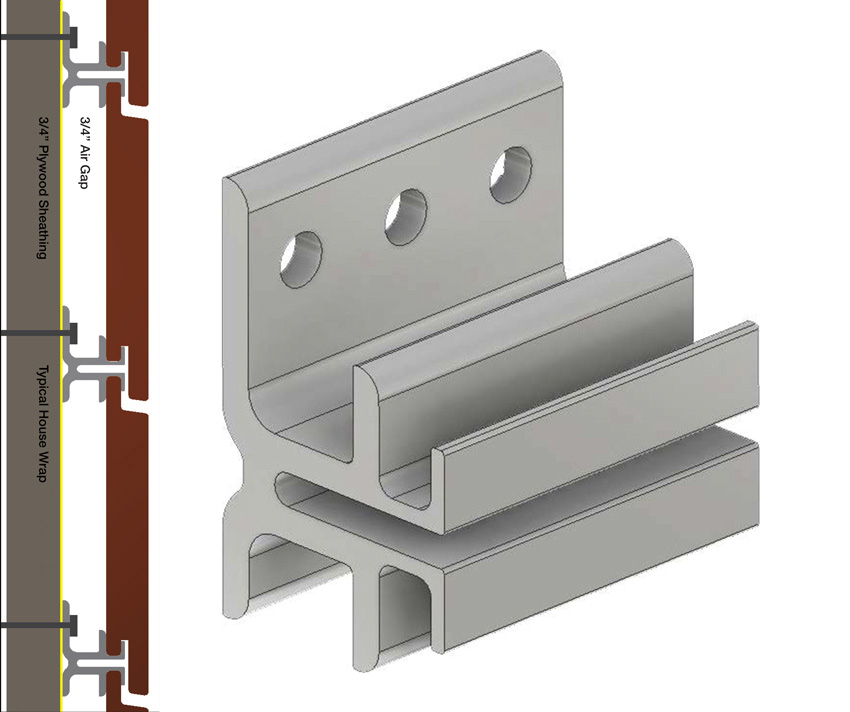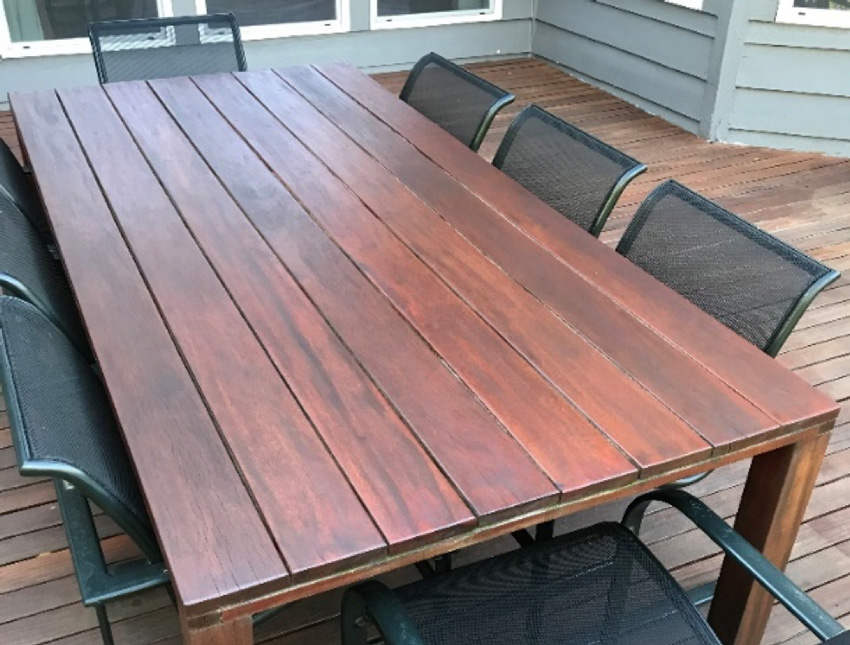Technology and Trends in Sustainable Tropical Hardwoods
Installing Tropical Hardwood
Once tropical hardwoods are selected, certified as sustainable, and delivered to the construction site, they need to be installed in a manner suitable to the material. Since most of them are denser and stronger, the installation tools and techniques used need to match the characteristics of the wood. Some recommended best practices are listed as follows.
Storage and Handling
For best results, tropical hardwood should be specified to be kept out of direct sunlight and not exposed to weather before installation. Once it is delivered to the job site, the material should be kept off of the ground by placing a few pieces of lumber underneath the stack. Cover the material with a tarp to protect from sun damage and rain. Note that air-dried hardwood must be allowed to acclimate to the ambient humidity and moisture content on the job site prior to installation. By contrast, kiln-dried hardwood can be installed after a few days of acclimation.
Deck Installations
One of the very common uses for tropical hardwoods is for outdoor decks. Generally, in coordination with applicable codes, 1x4 and 1x6 decking are commonly installed when joists are spaced at 16 inches on center. When joists are spaced 24 inches on center, 5⁄4x4 or 5⁄4x6 decking can be installed. If installing the decking on an angle, joist spacing should be 12 inches on center for best results. The spacing between the deck boards will depend on whether kiln- or air-dried wood products are being used. For kiln-dried decking, spacing between boards should be at least 3⁄16 inch for 4-inch decking and 1⁄4 inch for 6-inch decking. For air-dried decking, the wood must acclimate on the job site until the material is approximately 18 percent moisture content first. Then the spacing can be set between boards at 3⁄32 inch for 4-inch decking and 1⁄8 inch for 6-inch decking. This space between boards will allow for air circulation, room for expansion, and provide for the proper spacing as boards become fully seasoned.
In regards to ventilation under the deck (i.e., ground side), the deck surface should be at least 16 inches above the ground (or a roof deck if installed there) when using 1x4 or 5⁄4x4 decking material. When using 1x6 or 5⁄4x6, the deck should be constructed a minimum of 36 inches off the ground. These heights are recommended because there must be adequate air circulation underneath the deck in order to prevent cupping and warping of boards. In locations that are closer than 16 inches to the ground or a deck below, only 1x4 or 5⁄4x4 boards are recommended. Further, the spacing of the boards should be increased by at least 1⁄16 inch up to 1⁄4 inch total between boards. Additional clearance is recommended in locations that are over wet areas or water. In close-to-ground applications, 60 inches or less above the ground, a vapor barrier is necessary to prevent moisture from absorbing into the underside of the decking boards.
Exposed Decking Fasteners
Several different options are available for fasteners and for fastening techniques. It is recommended that stainless steel screws are used, installed through the face of every board with two screws per joist. Pre-drilling is always required on the ends of the boards and may be needed and preferred in between. A countersink drill bit with a positive stop should be used to ensure that all screw heads end up at a consistent depth. The fasteners can be pre-lubricated for easiest penetration and assembly. Note that self-tapping stainless steel screws are available but may still require pre-drilling. The use of non-stainless fasteners is not recommended because they will cause discoloration near the fastener. In particular, do not use carbon-steel screws. Stainless-steel screws will bend somewhat, allowing the wood to move with changes in moisture content as opposed to carbon-steel fasteners, which can snap due to stress from swelling and shrinkage. Several manufacturers sell a system for countersinking the screws and then plugging the hole with the same species of hardwood; this creates a nearly invisible fastening system.
Hidden Decking Fasteners
The only hidden decking fastener systems recommended for tropical hardwood use are those that allow for the natural expansion and contraction of the wood as it takes on seasonal moisture. When the proper hidden fasteners or clips are used, no face drilling or attachment is needed, which allows for a cleaner finished appearance and avoids undue stress from movement being transferred to the screws and substrate or framing. Deck clips made of metal and not plastic that specifically provide some resiliency (i.e., allow for movement and bounce back) are the only ones for which some wood product suppliers will recommend and provide a warranty. At least one supplier has developed its own superior clip that is made from heat-treated stainless steel and has the built-in resiliency as part of the design. Other hidden fasteners, or any other mechanical fastening systems, including those that fasten from the underside or edges of the boards, do not perform as well. Despite manufacturers’ claims, it has been determined that these types of products do not provide adequate anchoring of hardwood deck boards to the substructure. They also don’t always allow for the proper spacing and movement.

Hidden fasteners that provide enough resilience to move with the natural expansion and contraction of wood based on moisture content are the only type of fastener recommended by some suppliers for tropical hardwood decks.
Siding Installations
Tropical hardwood is available in traditional siding profiles as well as profiles suitable for rainscreen siding applications. For rainscreen installations, siding is commonly run horizontally using 1-by-6 siding boards. To function properly, a gap of approximately 3⁄4 inch is needed between the siding and the sheathing, which is typically covered with an air barrier and a water-resistive barrier. To create that gap and hold the siding in position, a metal clip is the recommended best practice. Other methods, such as furring strips or channels, don’t have the same durability or capability to accommodate the tropical hardwood material.

Rainscreen siding clips that are non-penetrating, specifically designed for tropical hardwood, and allow for movement are highly recommended.
The issues of mounting rainscreen siding properly are much the same as installing decking properly: allowing for the natural movement of the wood due to expansion and contraction from moisture content changes. As such, the clips that are used to hold the siding in place should be non-penetrating and provide the same resilient qualities as the deck clips discussed already. The best ones are made from marine-grade extruded aluminum and attached using exterior grade screws. Regardless of the siding installation technique, it is clearly worthwhile to use high-quality fastening products that won’t stain or deteriorate so they last at least as long as the tropical hardwood itself.
Finishing Tropical Hardwood
The final step for any wood-based installation is the finishing. As with most other species, there are choices and recommendations for how this is best done for tropical hardwoods. This starts with some general recommendations about proper job-site storage, as noted earlier, so that the wood has the chance to acclimatize before being finished. If the wood is kiln dried, it should be ready to receive finish quickly. If it is air dried, proper seasoning will be needed to under 15 percent moisture content in order to accept a finish. (This typically only applies to ipé since virtually all other tropical hardwoods are sold as kiln-dried.)

Finishing tropical hardwoods with a high-quality tung oil blend has been tested and found to provide the best results for preserving the character and visual appeal of the wood. This tigerwood outdoor dining table, fully exposed to the weather year around on a south-facing deck in Portland, was finished 22 months before this picture was taken and has had only two light maintenance coats since then.
Part of the reason that tropical hardwoods are used on exteriors is their natural appeal in their color and grain texture of the wood. In many cases, that means that there is a desire to leave the wood unfinished. The hardwood itself will hold up just fine without finishing, but its appearance will change. The ultraviolet (UV) rays of the sun will lighten the color over time, generally turning the wood to a light shade of grey or silver. Further, weathering and usage, particularly on horizontal deck surfaces, may cause other unwanted conditions such as raised or rough grain and/or surface checking. Therefore, it is recommended that at least one coat of a penetrating oil is applied to tropical hardwoods to provide some protection to the wood and help preserve its initial unfinished appearance. Installing the hardwoods without any such finish coat may cause refinishing issues in the future if the original color is desired. In particular, it will likely require deep pressure washing or sanding of the entire surface.
Conversely, some people assume that they can use a semitransparent or solid body stain on tropical hardwoods the same way they do on softwood lumber. While those stains may be composed with a penetrating oil, they also permanently change the color and appearance of the wood. This is assuming that they actually penetrate the wood and don’t end up forming a surface layer or film, which will most certainly flake after prolonged exposure. As such, they essentially negate the aesthetic reasons to use tropical hardwood in the first place. There are much less expensive woods that can be used if a solid stain color is desired. Hence, semitransparent and solid body stains are virtually never used on tropical hardwoods.









